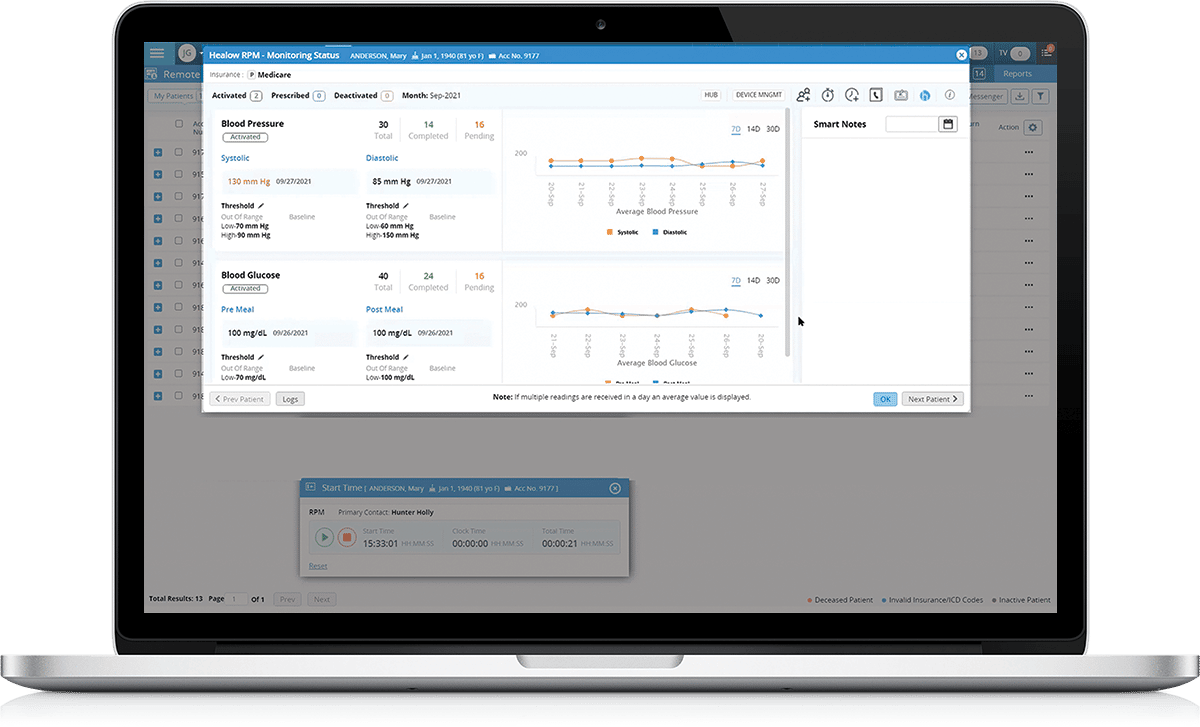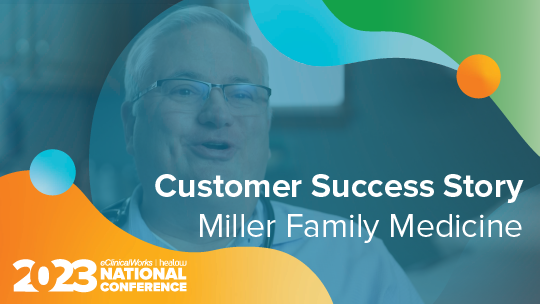
The healow Remote Patient Monitoring Module
The healow® Remote Patient Monitoring module is a data-driven, digital ecosystem that gathers physiological data from devices to gain insights, interpret health trends, and capture time-based activities. By giving providers better access to their patients’ data, the module helps deepen insight and promote better decisions, proactive interventions, and superior outcomes.
This healthcare IT solution features an intuitive, user-friendly design and is fully integrated in the eClinicalWorks® EHR system. Our Remote Patient Monitoring solution functions as a staff multiplier by easing the burdens on clinicians, clinical staff, and billers.
What Our Remote Patient Monitoring Software Can Do for Your Practice
- Capture time-based activities
- Streamline workflows
- Use work queues to boost productivity
- Set patient-specific thresholds
- Reduce burdens on clinical staff
- Gain insights & interpret trends
- Stage proactive intervention
- Get in-depth reporting
- Automate billing
- Reduce alert fatigue
Customer Success With RPM

Streamlining patient engagement and intervention with RPM
For Brookhaven Heart and MD365, a cardiology practice on New York’s Long Island, Remote Patient Monitoring (RPM) has meant closer monitoring of patients with medical conditions, allowing them to shape clinical care and prescribing of medications in response to real-time patient information. See how Dr. Satheesh Joseph used RPM to address one patient’s elevated blood pressure, providing physical relief and peace of mind.

Transforming Care with RPM Seamless Integration
Discover how healow Remote Patient Monitoring (RPM) helped a healthcare practice provide better patient care while improving its revenue. With the release of eClinicalWorks® V12, the practice switched two-thirds of their patients, integrating the readings with their electronic medical records. Cellular devices for remote patient monitoring allowed for the automatic transmission of patient information, making it easier for patients to share data with their healthcare providers. Through this program, the practice was able to quickly identify irregularities in one patient’s blood pressure, leading to a timely intervention that prevented a potential emergency room visit. The practice has seen improved patient outcomes, reduced healthcare costs, and increased revenue using RPM.
